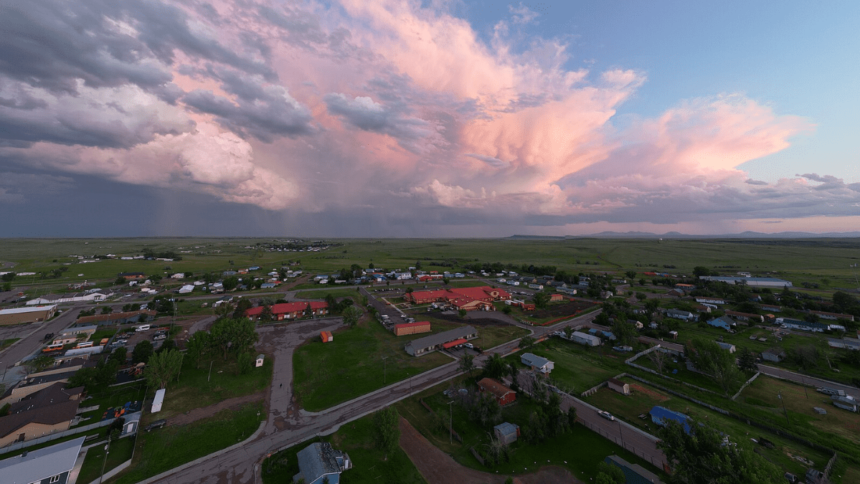The U.S. Department of Agriculture and the Fort Belknap Indian Community are partnering on a grassland conservation initiative modeled after the Conservation Reserve Program, a nearly 40-year-old program designed to remove environmentally sensitive land from agricultural production.
The 2018 Farm Bill established the Conservation Reserve Enhancement Program as a permanent program. The proposal with FBIC seeks to keep working lands in production but manage them with conservation objectives such as erosion control and biodiversity in mind.
The agreement, announced on July 16, marks the first time that a tribe in Montana is partnering with the USDA on the conservation initiative. Three tribes in South Dakota — the Cheyenne River, Oglala and Rosebud Sioux — have signed CREP agreements in the past two years.
Farmers and ranchers who voluntarily enter into a CREP contract would agree to maintain their existing vegetative cover of permanent grasses and legumes. Livestock grazing and forage production that complies with the program’s larger objectives would be allowed.
Maureen Wicks, the Montana director of the Farm Service Agency, said in a press release that the agreement represents a “significant milestone” in USDA’s efforts to conserve working lands and to partner with Native communities.
“It’s a clear reflection of our dedication to broaden the scope and reach of our voluntary, incentive-based conservation programs and engage tribal communities,” Wicks said. “It’s critical that programs like Conservation Reserve Enhancement Program are not just available but also accessible to all agricultural communities.”
Agriculture is the leading industry on the Fort Belknap Reservation. As such, its residents are especially vulnerable to crop-destroying droughts like the extreme drought that caused some producers on the reservation to lose the entirety of their hay crop in 2021.
If the full amount authorized by the overarching CREP agreement — 625,000 acres — is put into conservation, nine out of every 10 acres of land administered by the Fort Belknap Indian Community could be managed for conservation initiatives. Each acre conserved would garner a $15 “rental payment” per year to be paid by the federal government to the Fort Belknap Indian Community or the enrolled members who own land on the reservation.
In that scenario, the annual rental payment would exceed $9 million, though the project’s environmental assessment notes that a “more likely scenario is a gradual conversion up to a certain point of less than full enrollment.” Contract terms could range from 10 to 15 years.
Asked about the anticipated interest in the project, an FSA spokesperson said that grassland conservation programs are popular in Montana and that the agency expects “consistent interest in this project.”
Additional improvements to cost-sharing initiatives to support conservation initiatives could also be authorized. Such improvements could include fencing to support rotational grazing, well development for livestock watering and prescribed burning operations to improve plant production.
The agency on July 16 said it anticipates opening enrollment to the program “in the coming weeks.”
Montana Free Press did not receive a response to its request for comment from the Fort Belknap Indian Community’s Land Office.
Landowners and land managers who enroll in a CREP are generally afforded higher rental payments than those working within a CRP agreement, according to a 2022 Congressional Research Service report.
CREPs are designed with more focused environmental concerns or goals than their predecessor program and generally apply to a more targeted geographic area.
More than 680,000 acres across the United States are enrolled in a CREP agreement. Federal contributions to the program topped $148 million in fiscal year 2022.
LATEST STORIES
FWP solicits public comment on mule deer management
Montana Fish, Wildlife and Parks is seeking public input as it overhauls mule deer management and works to understand what’s driving down mule deer populations in eastern Montana.
Montana education board discusses trends, concerns in student achievement
Montana’s Board of Public Education reviewed troubling statistics about Indigenous student achievement gaps and statewide math scores, with the latter prompting the university system to recommend a three-year math requirement for high schoolers.
Screen door uproar in Great Falls public housing
Over the past month, some residents of Great Falls public housing worked to make sure the issue would be open for discussion. There have been signature drives and comments at Great Falls Housing Authority board meetings. Residents want to keep their screen doors.





